
Salmonflies
Pteronarcys californica
The giant Salmonflies of the Western mountains are legendary for their proclivity to elicit consistent dry-fly action and ferocious strikes.
Featured on the forum

It's only barely visible in one of my pictures, but I confirmed under the microscope that this one has a prosternal horn and the antennae are mid-way between the eyes and front of the head capsule.
I'm calling this one Pycnopsyche, but it's a bit perplexing. It seems to key definitively to at least Couplet 8 of the Key to Genera of Limnephilidae Larvae. That narrows it down to three genera, and the case seems wrong for the other two. The case looks right for Pycnopsyche, and it fits one of the key characteristics: "Abdominal sternum II without chloride epithelium and abdominal segment IX with only single seta on each side of dorsal sclerite." However, the characteristic "metanotal sa1 sclerites not fused, although often contiguous" does not seem to fit well. Those sclerites sure look fused to me, although I can make out a thin groove in the touching halves in the anterior half under the microscope. Perhaps this is a regional variation.
The only species of Pycnopsyche documented in Washington state is Pycnopsyche guttifera, and the colors and markings around the head of this specimen seem to match very well a specimen of that species from Massachusetts on Bugguide. So I am placing it in that species for now.
Whatever species this is, I photographed another specimen of seemingly the same species from the same spot a couple months later.
I'm calling this one Pycnopsyche, but it's a bit perplexing. It seems to key definitively to at least Couplet 8 of the Key to Genera of Limnephilidae Larvae. That narrows it down to three genera, and the case seems wrong for the other two. The case looks right for Pycnopsyche, and it fits one of the key characteristics: "Abdominal sternum II without chloride epithelium and abdominal segment IX with only single seta on each side of dorsal sclerite." However, the characteristic "metanotal sa1 sclerites not fused, although often contiguous" does not seem to fit well. Those sclerites sure look fused to me, although I can make out a thin groove in the touching halves in the anterior half under the microscope. Perhaps this is a regional variation.
The only species of Pycnopsyche documented in Washington state is Pycnopsyche guttifera, and the colors and markings around the head of this specimen seem to match very well a specimen of that species from Massachusetts on Bugguide. So I am placing it in that species for now.
Whatever species this is, I photographed another specimen of seemingly the same species from the same spot a couple months later.

Troutnut is a project started in 2003 by salmonid ecologist Jason "Troutnut" Neuswanger to help anglers and
fly tyers unabashedly embrace the entomological side of the sport. Learn more about Troutnut or
support the project for an enhanced experience here.
Female Epeorus frisoni Mayfly Dun Pictures
I collected this female dun together with a female spinner, a male dun, and a larger, damaged male dun.
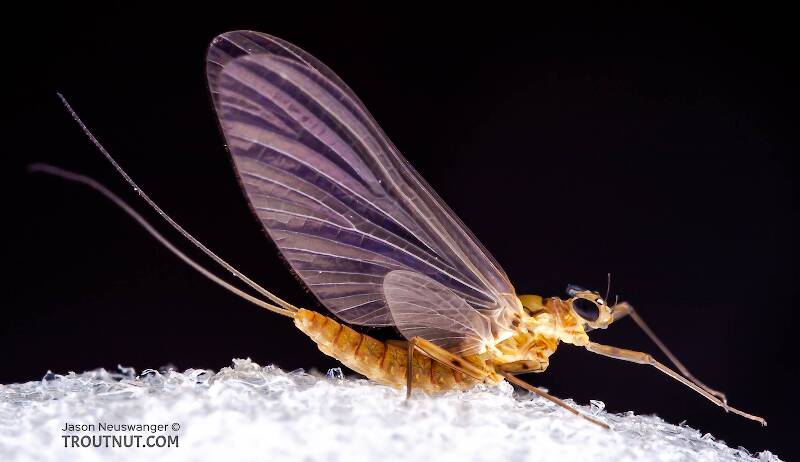
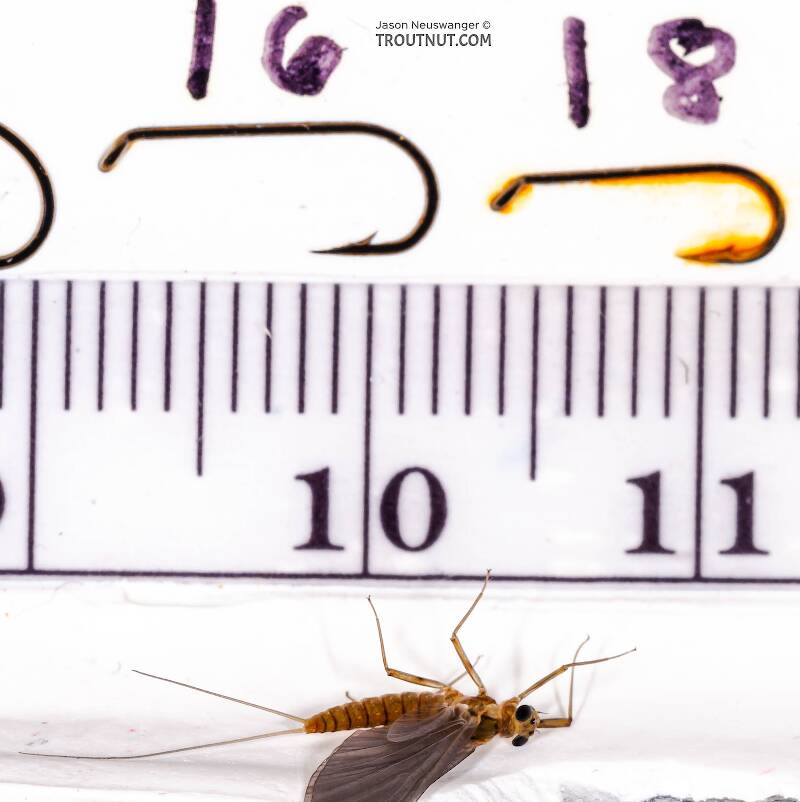
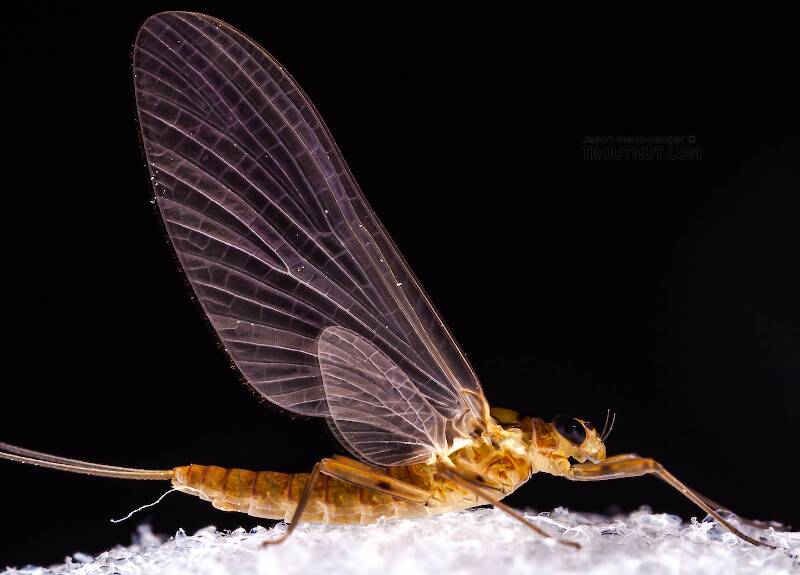
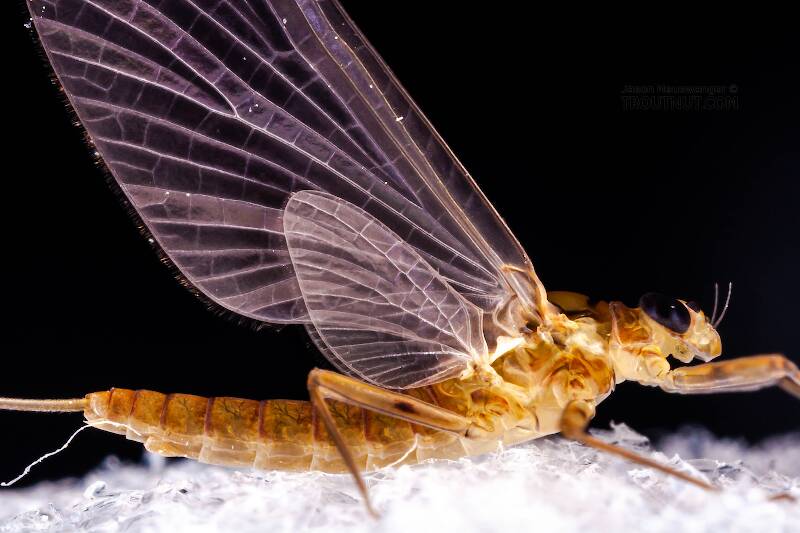
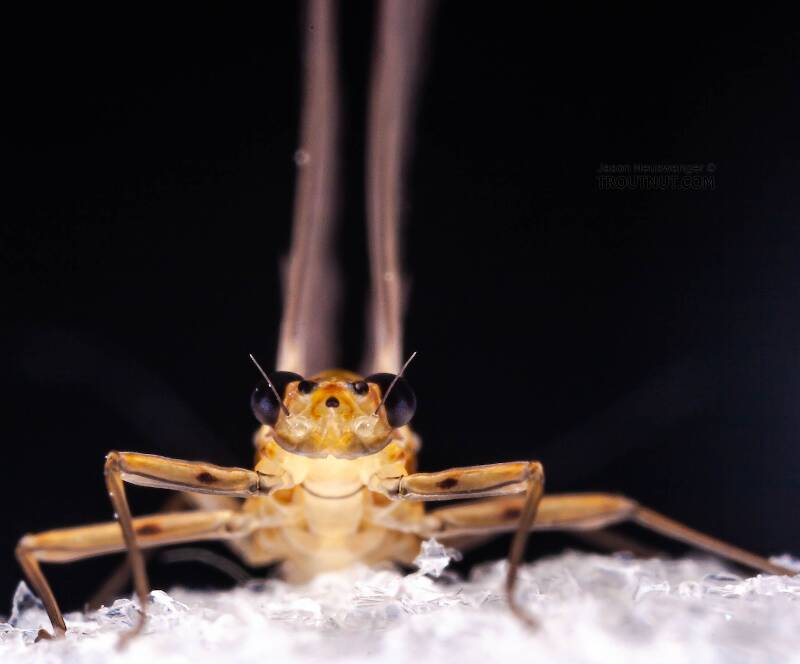
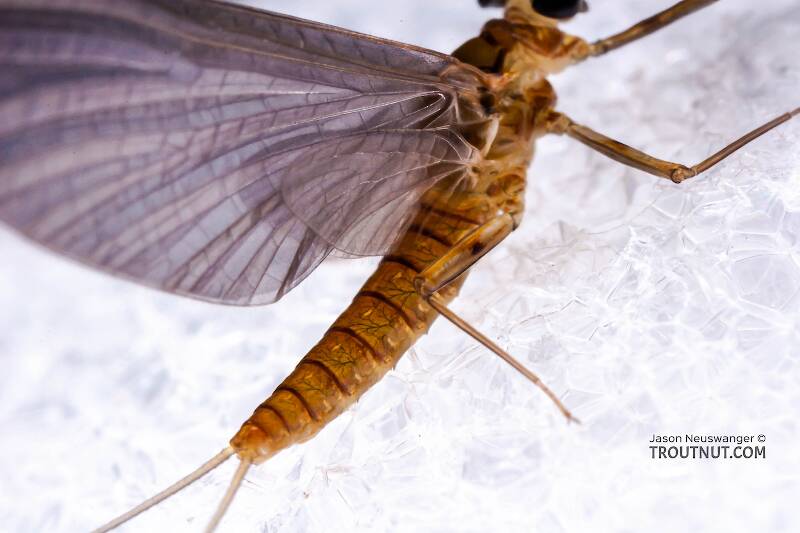
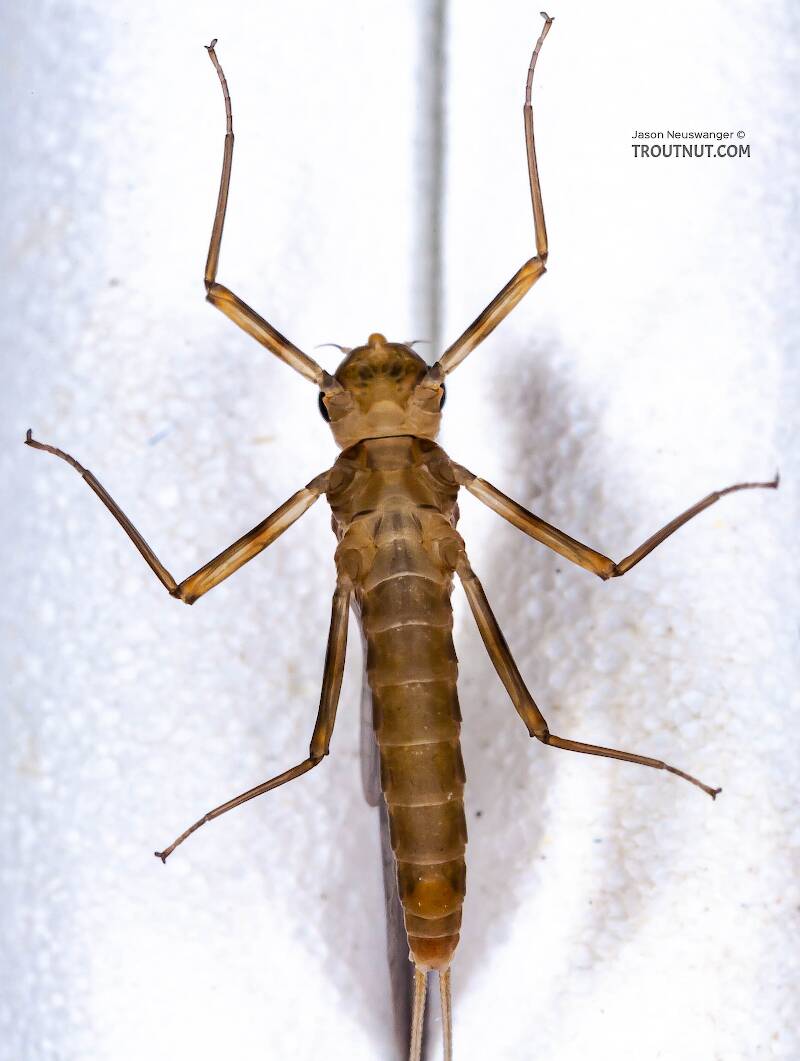
This mayfly was collected from Mystery Creek #23 in New York on September 6th, 2006 and added to Troutnut.com by Troutnut on October 3rd, 2006.
Discussions of this Dun
Probably E. fragilis, but...
1 replies
Posted by GONZO on Apr 8, 2009
Last reply on Apr 8, 2009 by Troutnut
Both the process of elimination and reading published descriptions of Eastern Epeorus (pleuralis group) seem to leave fragilis as the only likely possibility for this specimen (as well as the related ones--#630, #631, and #633). The collection date is near the emergence range given for fragilis, and they match the description of this species in nearly every way except one: size.
Burian, et al. (2008) provide a key for Northeastern Epeorus adults that uses size as a significant means of distinguishing between fragilis and frisoni. They describe fragilis as less than 6.80mm. All of these specimens are larger, ranging from about 7mm-8.5mm. This puts them squarely within the range given for (the very similar) frisoni--6.83mm-9.42mm.
Although frisoni is described as being lighter in color than these specimens, two comments from the Burian publication are particularly interesting in this regard:
It would probably be reasonable to place these specimens as (size-anomalous) fragilis under the current taxonomic scheme. However, the stream in which they were captured seems to fit the above criteria pretty well. It would be very interesting to see someone like Konchu investigate this population further.
Burian, et al. (2008) provide a key for Northeastern Epeorus adults that uses size as a significant means of distinguishing between fragilis and frisoni. They describe fragilis as less than 6.80mm. All of these specimens are larger, ranging from about 7mm-8.5mm. This puts them squarely within the range given for (the very similar) frisoni--6.83mm-9.42mm.
Although frisoni is described as being lighter in color than these specimens, two comments from the Burian publication are particularly interesting in this regard:
At least one of us believes that a thorough search of suitable, higher elevation, cold streams in the White Mountains of New Hampshire, the Adirondacks of New York, and the Gaspe area of Quebec should result in the discovery of several new records [of frisoni].
The habitat association of E. frisoni with cold (even in summer), high gradient, minimally disturbed streams at or above 1200' (~365m) could be used to identify some of the best high elevation lotic habitats for conservation purposes. Variation among the New England subset of the eastern Nearctic genus Epeorus strongly points to the need for a full revision of this genus.
It would probably be reasonable to place these specimens as (size-anomalous) fragilis under the current taxonomic scheme. However, the stream in which they were captured seems to fit the above criteria pretty well. It would be very interesting to see someone like Konchu investigate this population further.
Start a Discussion of Dun
Female Epeorus frisoni Mayfly Dun Pictures
Collection details
Location: Mystery Creek #23, New York
Date: September 6th, 2006
Added to site: October 3rd, 2006
Author: Troutnut
Date: September 6th, 2006
Added to site: October 3rd, 2006
Author: Troutnut

